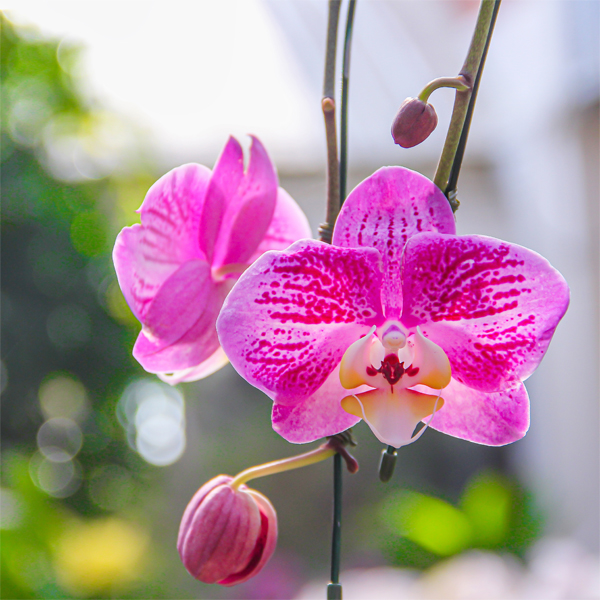
The days are getting shorter and the nights are getting cooler – both sure signs that fall is coming. What does this mean for all those houseplants that have been enjoying the warm summer weather while adorning your porches and patios? Remember, most houseplants are from tropical climates. Even if the days continue to be warm, those cool nights of fall can be harmful to your plants so you need to start prepping them to come back indoors. Just like you needed to gradually acclimate your houseplants in order for them to thrive outside last spring, you will now need to follow a similar process to bring them back inside for the winter.
Prior to bringing those plants back in to your home, it is important to check them for insects, like aphids and spider mites and even bigger pests! You definitely don’t want any little hitchhikers to infest all your indoor plants. Hosing down your plants may get rid of some pests and may make others more apparent. Physically pick off and dispose of any visible insects that you may find. Consider spraying your plants with Neem oil to help ensure that they are insect free. Once inside, physically distance your indoor plants to reduce the possibility of infestation.
Many houseplants experience a growth spurt in the summer and may need to be repotted at this point. Make sure that you use potting soil and not garden soil for your repotting as garden soil can contain pests and disease. If your plant has gotten leggy while outdoors, remove it from the pot, and prune the top and the roots equally. Scrub the pot thoroughly and repot with fresh potting soil.
Once you have taken care of the pest and potting issues, and the night time temperatures are dipping into the 50’s, it is time to start bringing your plants indoors at night. Most houseplants cannot tolerate temperatures below 45 degrees and for some, even 65 degrees can be too cold. As sudden changes in temperature, light, and humidity can be traumatic to plants, resulting in yellowed leaves, dieback, wilting, and even death, reacclimatizing to indoor life should be a gradual process. For the first three to four days, start by taking your plants indoors in the evening and bringing them back out in the morning. Then, gradually increase the amount of time the plants spend indoors over the next ten days. By the end of the second week, your plants should be indoors full time. Although your plants may end up with a yellow leaf or two, this gradual exposure to the reduced lighting and humidity of the indoor environment will help prevent shock.
Once ensconced full time indoors, your plants may not need as much water as they did outside, so only water when the soil is dry to the touch. Water succulents even less frequently – wait until they are dry to the touch for several days. Also, many houseplants will enter a phase of dormancy or decreased growth rate when back inside due to lower light levels and shorter daylight hours, so no need to fertilize. Be patient and your indoor plants will once again adapt to life inside.
By Hilary Kassler









